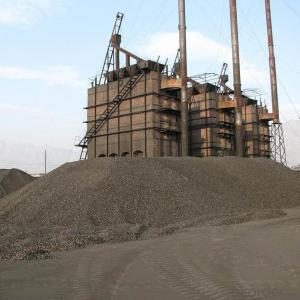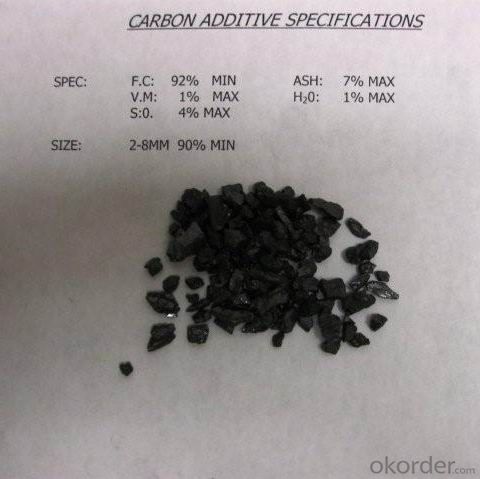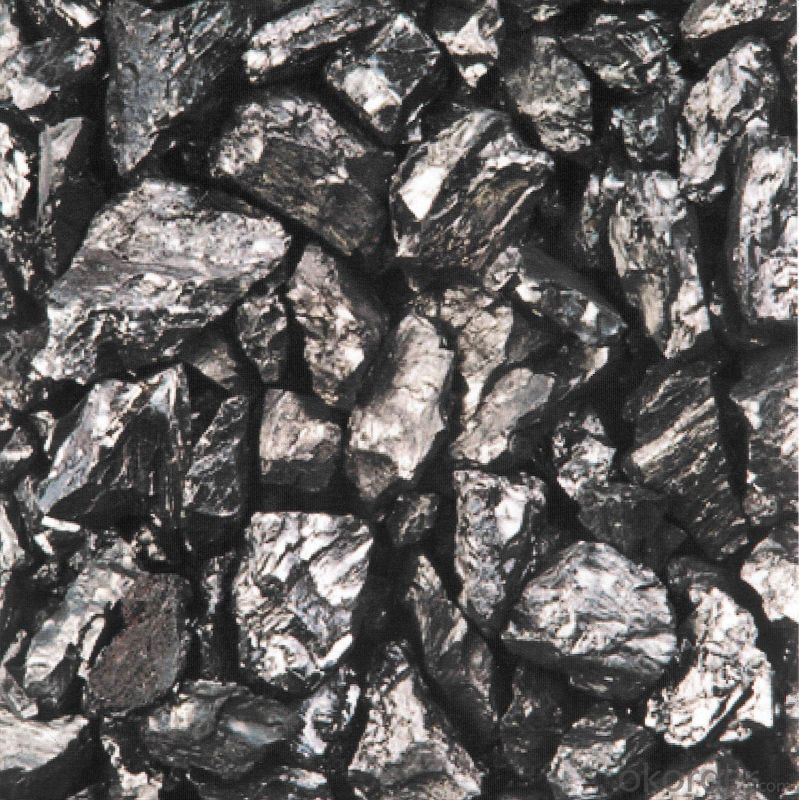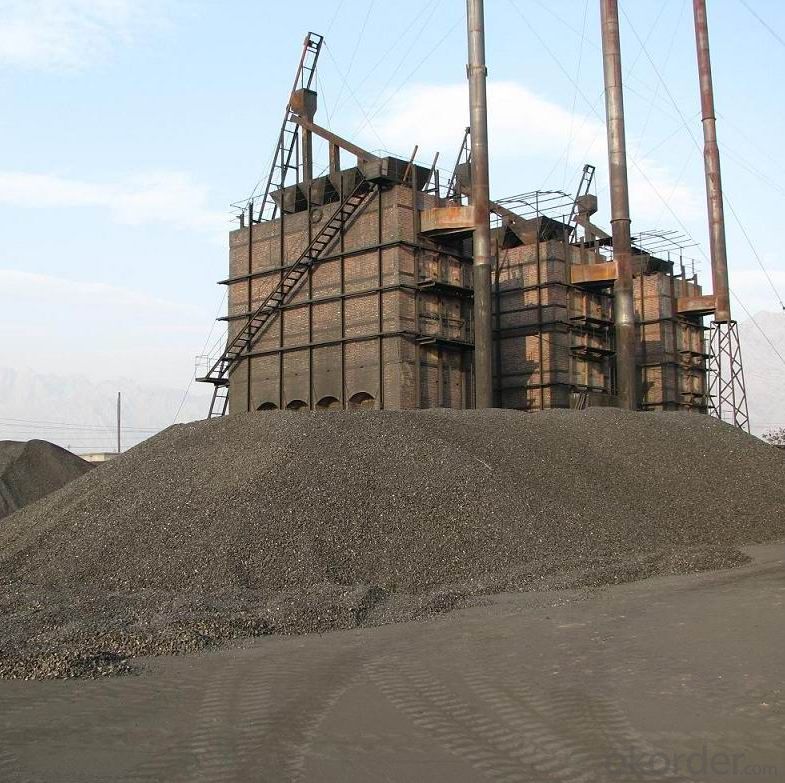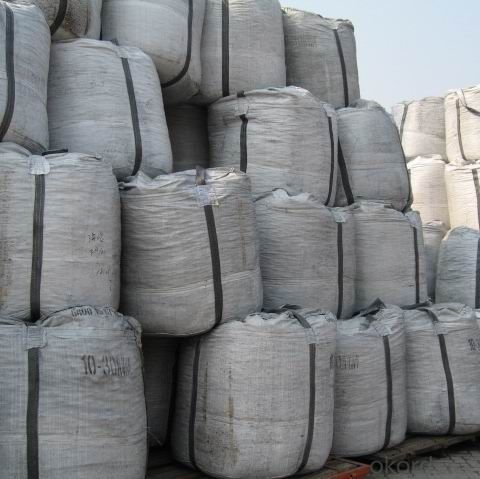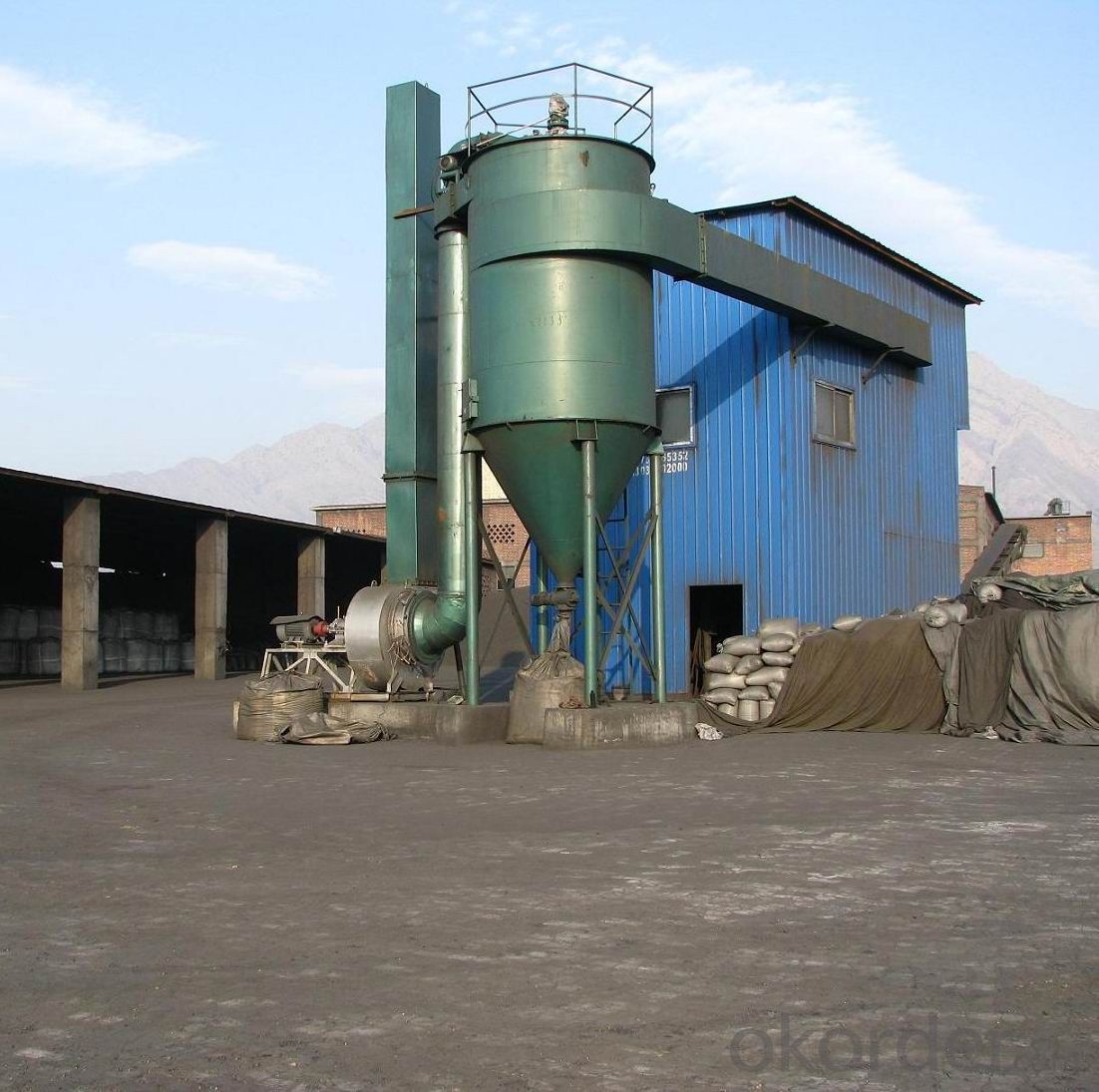Carbon Additve Low Sulphur for Steelmaking
- Loading Port:
- Tianjin
- Payment Terms:
- TT or LC
- Min Order Qty:
- 20 m.t.
- Supply Capability:
- 10000 m.t./month
OKorder Service Pledge
OKorder Financial Service
You Might Also Like
Quick Details
Place of Origin: Ningxia, China (Mainland)
Application: steel making
Shape: granule
Dimensions: FC90-95%
Product Type: Carbon Additive
C Content (%): 90-95% MIN
Working Temperature: -
S Content (%): 0.5%MAX
N Content (%): -
H Content (%): 0.6%MAX
Ash Content (%): 8.5%MAX
Volatile: 2%MAX
ADVANTAGE: low ash & sulfur
COLOR: Black
RAW MATERIAL: TaiXi anthracite
Packaging & Delivery
| Packaging Details: | In 1MT plastic woven bag. |
|---|---|
| Delivery Detail: | 30-40DAYS |
Specifications
Carbon Additve Low Sulphur for Steelmaking
Carbon Additve low Ash,S,P
FC>95% ASH<4% S<0.3%
It is made from TaiXi anthracite.
instead of pertrol coke reduce the cost
Structure
Carbon Additve Low Sulphur for Steelmaking
Shape: granule
Dimensions: FC90-95%
Product Type: Carbon Additive
C Content (%): 90-95% MIN
Working Temperature: -
S Content (%): 0.5%MAX
N Content (%): -
H Content (%): 0.6%MAX
Ash Content (%): 8.5%MAX
Volatile: 2%MAX
ADVANTAGE: low ash & sulfur
COLOR: Black
RAW MATERIAL: TaiXi anthracite
Feature
Carbon Additve Low Sulphur for Steelmaking
Specifications (%): | ||||||
Grade | F.C | Ash | V.M | Moisture | S | Size |
CR-95 | ≥95 | <4 | <1 | <1 | <0.3 | 0-30mm |
CR-94 | ≥94 | <4 | <1 | <1 | <0.3 | |
CR-93 | ≥93 | <6 | <1 | <1 | <0.4 | |
CR-92 | ≥92 | <7 | <1 | <1 | <0.4 | |
CR-91 | ≥91 | <8 | <1 | <1 | <0.4 | |
CR-90 | ≥90 | <8.5 | <1.5 | <2 | <0.4 | |
Image
Carbon Additve Low Sulphur for Steelmaking
FAQ:
Carbon Additve Low Sulphur for Steelmaking
Why we adopt carbon additive?
Carbon Additives used as additive in steel making process. It made from well-selected Tai Xi anthracite which is low in content of ash, sulphur, phosphorus, high heat productivity, high chemically activation.
Mainly industry property of it is: instead of traditional pertroleum coal of Carbon Additives, reduce the cost of steelmaking.
Advantage:
Carbon Additve Low Sulphur for Steelmaking
1.High quality and competitive price.
2.Timely delivery.
3.If any item you like. Please contact us.
Your sincere inquiries are typically answered within 24 hours.
- Q:What kinds of barbecue carbon do you have?
- The carbon has uniform size, long burning time, uniform fire, no smoke and no expensive price. Many professional barbecue shops choose this kind of carbon. The disadvantage is that it should not ignite. If only two or three people barbecue, with this carbon, then people are full, carbon has not used up, can not help but feel a little wasted.
- Q:How do carbon emissions contribute to extreme weather events?
- Extreme weather events are influenced by carbon emissions, which contribute to climate change. When greenhouse gases like carbon dioxide are released into the atmosphere, they trap heat from the sun and cause the Earth's average temperature to rise. Human activities such as burning fossil fuels, deforestation, and industrial processes are major drivers of this phenomenon known as global warming. As the planet warms, weather patterns become disrupted, leading to an increase in extreme weather events. Carbon emissions play a role in this process in several ways: 1. Heatwaves: Higher carbon emissions result in increased temperatures, leading to more frequent and intense heatwaves. These prolonged periods of extreme heat pose risks to human health, agriculture, and ecosystems. 2. Hurricanes and tropical storms: Carbon emissions cause ocean temperatures to rise, providing more energy to fuel hurricanes and tropical storms. This leads to stronger storms with higher wind speeds and heavier rainfall, causing more destruction and flooding. 3. Droughts: Climate change caused by carbon emissions can disrupt precipitation patterns, resulting in decreased rainfall and increased droughts in certain regions. These prolonged periods of water scarcity have severe impacts on agriculture, water supplies, and ecosystems. 4. Heavy rainfall and flooding: Global warming intensifies the water cycle, leading to more evaporation and moisture in the atmosphere. This results in heavier rainfall events, increasing the risk of flooding and flash floods. 5. Wildfires: Climate change, driven by rising temperatures and drier conditions, creates favorable conditions for wildfires. Carbon emissions contribute to longer and more severe fire seasons, leading to more extensive and destructive wildfires. It's important to note that while carbon emissions contribute to extreme weather events, they are not the sole cause. Natural climate variability factors like El Niño and La Niña can also influence extreme weather. However, reducing carbon emissions and transitioning to cleaner energy sources can help mitigate the impacts of climate change and prevent further exacerbation of extreme weather events.
- Q:What is the relationship between carbon emissions and deforestation?
- The close connection between carbon emissions and deforestation cannot be overstated. Deforestation involves the permanent removal of trees and vegetation in forests, often to clear space for agriculture, urbanization, or logging. This activity releases vast amounts of carbon dioxide (CO2) into the atmosphere, contributing to greenhouse gas emissions and ultimately, climate change. Trees play a vital role in mitigating climate change as they absorb CO2 from the atmosphere through photosynthesis and store it within their tissues. When forests are cleared, this ability to store carbon is lost, and the previously stored carbon is released back into the atmosphere. It is estimated that deforestation is responsible for roughly 10% of global greenhouse gas emissions. Moreover, the burning of forests, a common practice during deforestation, further adds to carbon emissions. When trees are burned, the carbon they have stored is released as CO2, intensifying the greenhouse effect. This is especially significant in tropical regions like the Amazon rainforest, where deforestation is rampant. On the flip side, reducing deforestation and promoting reforestation can help alleviate carbon emissions. By conserving existing forests and planting new trees, we can enhance carbon sequestration and lessen the amount of CO2 in the atmosphere. Forest conservation and restoration initiatives are essential elements of global climate change strategies, as they not only combat climate change but also safeguard biodiversity and provide crucial ecosystem services. In conclusion, the connection between carbon emissions and deforestation is evident: deforestation leads to increased carbon emissions, while efforts to conserve and restore forests help decrease CO2 levels in the atmosphere. It is imperative to prioritize sustainable land-use practices and lend support to initiatives that safeguard and revive forests to effectively mitigate climate change.
- Q:What is the role of carbon in the human body?
- Carbon plays a crucial role in the human body as it is a fundamental element for all organic molecules. It is the backbone of many biomolecules, including carbohydrates, lipids, proteins, and nucleic acids, which are essential for various physiological processes. Firstly, carbon is a key component of carbohydrates, which are the primary source of energy for the body. Glucose, a simple sugar composed of carbon, hydrogen, and oxygen, is broken down in cells to release energy through cellular respiration. Additionally, carbon forms the structure of complex carbohydrates like glycogen, which is stored in the liver and muscles as an energy reserve. Secondly, carbon is present in lipids, such as fats and oils, which serve as an energy source, insulation, and protection for organs. Carbon atoms are arranged in long hydrocarbon chains, making lipids hydrophobic and allowing them to store and release energy efficiently. Lipids also play a crucial role in cell membrane structure and hormone production. Furthermore, carbon is a fundamental component of proteins, which are involved in almost all cellular processes. Proteins are composed of amino acids, and carbon atoms form the backbone of these amino acids, providing stability and flexibility to the protein structure. Carbon also participates in the formation of peptide bonds, which link amino acids together to build proteins. Proteins are essential for various functions, including enzyme catalysis, transport and storage of molecules, immune response, and cell signaling. Lastly, carbon is a vital element in nucleic acids, such as DNA and RNA, which contain genetic information. Carbon atoms form the sugar-phosphate backbone of nucleic acids, providing stability to the structure. DNA carries hereditary information, while RNA plays a crucial role in protein synthesis. In summary, carbon is essential in the human body as it forms the basis of organic molecules like carbohydrates, lipids, proteins, and nucleic acids. Its versatility and ability to form stable bonds allow for the diverse functions and structures necessary for life processes.
- Q:I want to know why the ATP in the five carbon sugar is a DNA RNA??
- An adenosine ribose adenine nucleoside by connection formation.If it is deoxyribonucleic acid, it is called three phosphate adenine nucleoside, or dATP
- Q:How does carbon dioxide affect the formation of clouds?
- Cloud formation is significantly influenced by carbon dioxide in Earth's climate system. This is because carbon dioxide acts as a greenhouse gas, trapping heat in the atmosphere and causing a global increase in temperatures. This rise in temperature affects various atmospheric processes, including the formation of clouds. One of the main ways carbon dioxide impacts cloud formation is by affecting the water cycle. Increased levels of carbon dioxide lead to warmer temperatures, which result in more water evaporating from the Earth's surface. This increased evaporation leads to a higher amount of water vapor in the atmosphere, which is essential for the formation of clouds. In addition, carbon dioxide indirectly influences cloud formation by influencing atmospheric stability and the vertical movement of air. Higher concentrations of carbon dioxide can change the temperature profile of the atmosphere, causing the lower atmosphere to warm more than the upper atmosphere. This temperature difference can alter air density, causing air to rise or sink. Rising air promotes cloud formation, while sinking air inhibits it. Moreover, carbon dioxide affects the size and properties of cloud droplets. Increased concentrations of carbon dioxide can result in changes in the microphysical properties of clouds, such as smaller droplet size and concentration. Research suggests that higher carbon dioxide levels may impact cloud lifetime and precipitation patterns. It is important to note that the relationship between carbon dioxide and cloud formation is complex and remains an active area of research. Scientists are continuously studying the intricate interactions between atmospheric gases, cloud formation, and climate change to gain a better understanding of the future implications of carbon dioxide emissions on cloud dynamics and the overall climate system.
- Q:How does carbon cycle through the environment?
- The carbon cycle is a natural process through which carbon is constantly recycled and exchanged between the atmosphere, land, and ocean. It begins with carbon dioxide (CO2) being absorbed by plants through photosynthesis, converting it into organic compounds. These plants are then consumed by animals, transferring carbon up the food chain. When plants and animals die, their organic matter decomposes, releasing carbon back into the atmosphere as CO2. Additionally, some carbon is stored in the form of fossil fuels, such as coal and oil, which are released through human activities like burning fossil fuels and deforestation. Ultimately, carbon is continually cycled through the environment, balancing the levels of CO2 in the atmosphere and supporting life on Earth.
- Q:How does carbon impact the stability of savannah ecosystems?
- Carbon plays a crucial role in the stability of savannah ecosystems. It is an essential element for all living organisms and is involved in various ecological processes. Carbon is primarily present in the form of organic matter, which is vital for the growth and development of plants, the primary producers in these ecosystems. In savannahs, carbon impacts stability in multiple ways. Firstly, carbon dioxide (CO2) is a key component of the Earth's atmosphere and plays a significant role in regulating the global climate. Savannas are known for their ability to sequester and store large amounts of carbon in their vegetation and soils. This carbon storage helps mitigate climate change by reducing the amount of CO2 in the atmosphere. Furthermore, carbon is essential for plant growth through photosynthesis. Savanna plants, such as grasses and scattered trees, utilize carbon dioxide from the air, converting it into carbohydrates and other organic compounds. This process not only provides plants with energy but also contributes to the overall productivity of the ecosystem. The stability of savannah ecosystems also depends on the interaction between plants and animals. Carbon-rich vegetation serves as a food source for herbivores, such as zebras and antelopes, which in turn support predators like lions and hyenas. The carbon cycle ensures a continuous flow of energy and nutrients throughout the food web, maintaining the balance and stability of the ecosystem. Moreover, the carbon content in savannah soils influences their fertility and ability to retain moisture. Organic matter, derived from decaying plant material, improves soil structure, nutrient availability, and water holding capacity. This, in turn, supports the growth of vegetation and sustains the diverse array of species found in savannah ecosystems. However, human activities, such as deforestation, agricultural practices, and the burning of fossil fuels, are altering the carbon balance in savannahs. Deforestation removes carbon-rich trees and plants, reducing the overall carbon storage capacity of the ecosystem. Additionally, the release of carbon dioxide from the burning of fossil fuels contributes to the greenhouse effect and climate change, which can disrupt the stability of savannah ecosystems. In conclusion, carbon plays a critical role in maintaining the stability of savannah ecosystems. It influences climate regulation, supports plant growth, provides energy for the food web, and enhances soil fertility. However, human activities that disrupt the carbon balance in these ecosystems can have detrimental effects on their stability and overall health. Therefore, efforts to conserve and restore savannah ecosystems are essential for preserving their carbon storage capacity and ensuring their long-term stability.
- Q:How is carbon used in the water treatment process?
- The water treatment process employs carbon in various ways. Activated carbon, which possesses a high porosity and a large surface area, is commonly utilized. This enables it to efficiently adsorb and eliminate impurities from water. Water treatment facilities often employ activated carbon in the form of granules, pellets, or blocks. It can be introduced at different stages of the treatment process. For instance, during the initial filtration stage, activated carbon can be utilized to eliminate particles that can affect the water's taste and smell, such as sediment and chlorine byproducts. Moreover, activated carbon is highly effective in eliminating organic compounds, including pesticides, herbicides, and industrial chemicals, that may exist in the water. The consumption of these compounds can be detrimental to human health, thus the use of activated carbon ensures the safety of drinking water. Another method in which carbon is employed in water treatment is through carbonation. This procedure involves injecting carbon dioxide gas into the water, which aids in reducing its pH level. Carbonation is commonly employed in the treatment of alkaline water sources, as it neutralizes the water and makes it more suitable for consumption. In conclusion, carbon plays a vital role in the water treatment process as it efficiently removes impurities and enhances the quality of drinking water. Its ability to adsorb makes it an invaluable tool in guaranteeing the safety and healthiness of water.
- Q:What are the effects of carbon emissions on animal populations?
- Animal populations are profoundly affected by carbon emissions, which result in the disruption of ecosystems and the loss of habitats. The rise in carbon dioxide levels in the atmosphere leads to an increase in the Earth's temperature, causing climate change. This change in climate alters the availability of resources like food and water, making survival and reproduction more challenging for animals. Moreover, carbon emissions contribute to the acidification of the ocean. Seawater absorbs carbon dioxide, creating carbonic acid and lowering the ocean's pH. This acidification negatively impacts marine life, especially species that rely on calcium carbonate to build shells or skeletons, such as corals and shellfish. As their habitats become more corrosive, these animals struggle to survive and reproduce, resulting in significant population declines. Additionally, carbon emissions are closely associated with air pollution, which directly and indirectly affects animal populations. High levels of air pollution, particularly nitrogen dioxide and particulate matter, can cause respiratory problems and other health issues in animals. This reduces their fitness and increases mortality rates, ultimately influencing the overall population size. Lastly, carbon emissions contribute to deforestation and the destruction of habitats. Human activities like agriculture and urbanization clear more land, displacing animal populations and forcing them to adapt to fragmented landscapes. This fragmentation limits their movement, access to resources, and increases their vulnerability to predation and other threats. In conclusion, carbon emissions have extensive effects on animal populations, including habitat loss, climate change, ocean acidification, air pollution, and deforestation. These impacts disrupt ecosystems and jeopardize the survival of numerous animal species. It is crucial to address carbon emissions and reduce our carbon footprint to mitigate these detrimental effects and safeguard the Earth's biodiversity.
1. Manufacturer Overview |
|
|---|---|
| Location | |
| Year Established | |
| Annual Output Value | |
| Main Markets | |
| Company Certifications | |
2. Manufacturer Certificates |
|
|---|---|
| a) Certification Name | |
| Range | |
| Reference | |
| Validity Period | |
3. Manufacturer Capability |
|
|---|---|
| a)Trade Capacity | |
| Nearest Port | |
| Export Percentage | |
| No.of Employees in Trade Department | |
| Language Spoken: | |
| b)Factory Information | |
| Factory Size: | |
| No. of Production Lines | |
| Contract Manufacturing | |
| Product Price Range | |
Send your message to us
Carbon Additve Low Sulphur for Steelmaking
- Loading Port:
- Tianjin
- Payment Terms:
- TT or LC
- Min Order Qty:
- 20 m.t.
- Supply Capability:
- 10000 m.t./month
OKorder Service Pledge
OKorder Financial Service
Similar products
New products
Hot products
